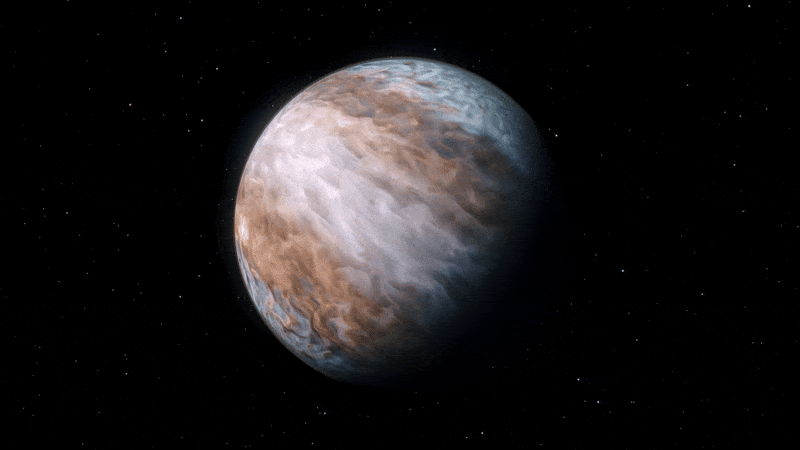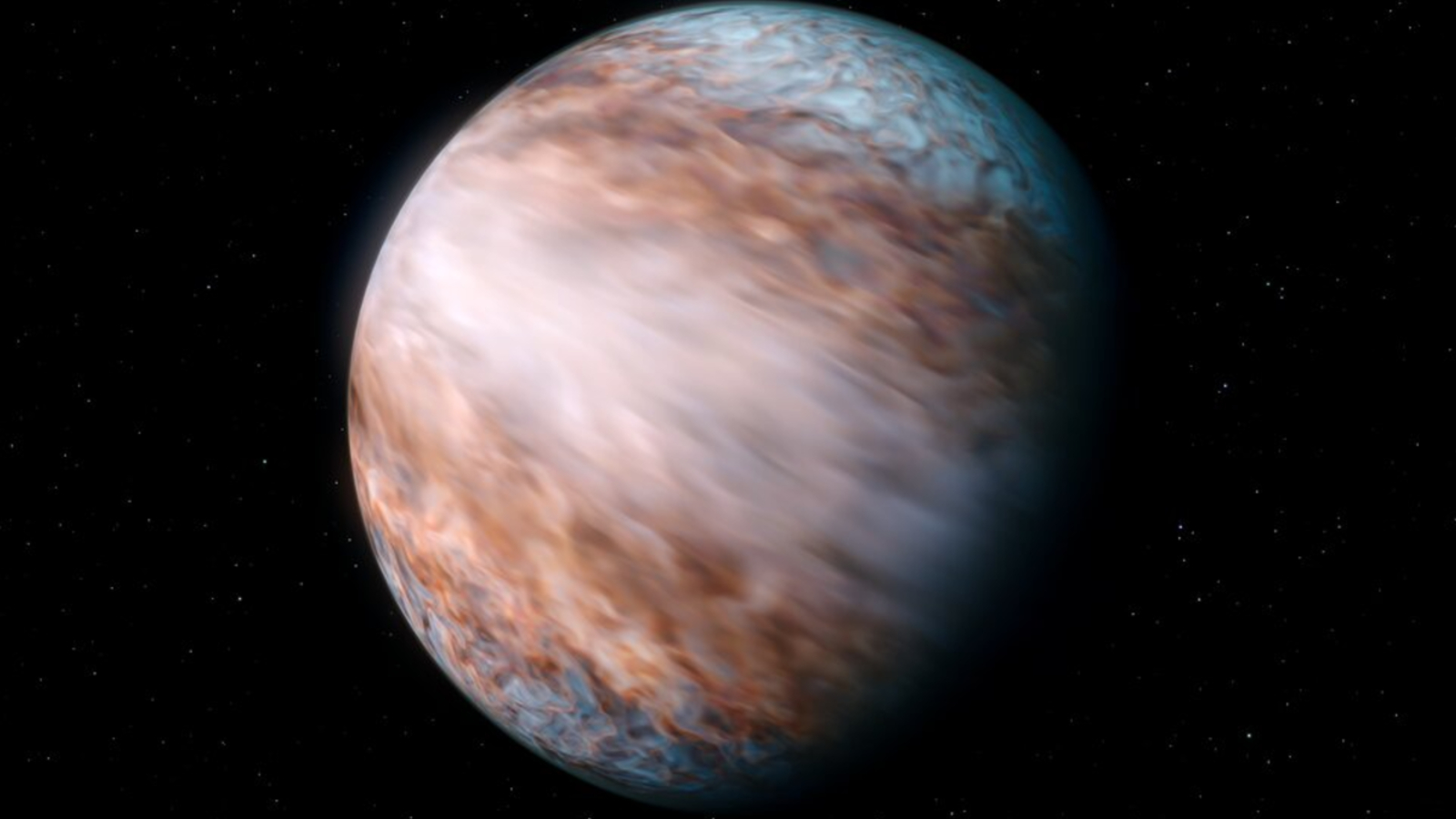'Supersonic jetstream' with winds 130 times faster than a Category 5 hurricane spotted in the Milky Way
The record-breaking winds are circling the nearby "puffy" exoplanet WASP-127b, and are traveling six times faster than the alien world spins.

Astronomers have spotted a "supersonic jetstream" on a nearby alien world, with winds reaching 20,500 mph (33,000 km/h) — the fastest planetary gusts detected anywhere in the cosmos.
The record-breaking weather is raging on WASP-127b, a "puffy" gas giant around 500 light-years from Earth that is slightly larger than Jupiter but has a fraction of the mass. The exoplanet, discovered in 2016, has a large band of strong winds, or jetstream, circling its equator — similar to the winds that cause the stripes seen on the solar system's gas giants. However, the speed of this jetstream had remained a mystery until now.
But in a new study, published Jan. 21 in the journal Astronomy and Astrophysics, researchers finally determined the jetstream's speed by measuring it against the rest of the exoplanet's spinning atmosphere, using data collected by the European Southern Observatory’s (ESO) Very Large Telescope (VLT) in Chile.
"Part of the atmosphere of this planet is moving towards us at a high velocity while another part is moving away from us at the same speed," study lead author Lisa Nortmann, an astrophysicist at the University of Göttingen in Germany, said in a statement. "This signal shows us that there is a very fast, supersonic, jet wind around the planet’s equator."
Related: 7 solar system worlds where the weather is crazy

The winds on WASP-127b are traveling at 5.6 miles per second (9 kilometers per second), which is around 130 times faster than the threshold for a Category 5 hurricane or roughly 15 times faster than a speeding bullet.
It is also around 18 times faster than the winds in Neptune's largest jetstream, which can hit 1,100 mph (1,800 km/h) — the fastest gusts recorded in the solar system, according to NASA.
Sign up for the Live Science daily newsletter now
Get the world’s most fascinating discoveries delivered straight to your inbox.
WASP-127b's jetstream is traveling roughly six times faster than the exoplanet spins. "This is something we haven't seen before," Nortmann said.
Complex weather
Researchers determined the composition of WASP-127b's clouds by analyzing the light that passed through the puffy planet's atmosphere. This showed that water vapor and carbon dioxide are both present in the spinning clouds. However, while these compounds are both associated with life on Earth, they can also be explained by abiotic processes so are not proof of extraterrestrial life.
Temperature data collected by the VLT showed that WASP-127b's polar regions are colder than the rest of the planet, and that there are slight temperature variations between the day and night sides of the planet. "This shows that the planet has complex weather patterns just like Earth and other planets of our own [solar] system," study co-author Fei Yan, an astronomer at the University of Science and Technology of China, said in the statement.
At the moment, only ground-based telescopes like the VLT can measure distant planetary winds because orbiting observatories, such as the James Webb Space Telescope, do not have the "necessary velocity precision," the researchers wrote.
New ground-based telescopes currently under construction, such as ESO’s Extremely Large Telescope, will "likely resolve even finer details of the wind patterns [on gas giants] and expand this research to smaller, rocky planets," Nortmann said.

Harry is a U.K.-based senior staff writer at Live Science. He studied marine biology at the University of Exeter before training to become a journalist. He covers a wide range of topics including space exploration, planetary science, space weather, climate change, animal behavior and paleontology. His recent work on the solar maximum won "best space submission" at the 2024 Aerospace Media Awards and was shortlisted in the "top scoop" category at the NCTJ Awards for Excellence in 2023. He also writes Live Science's weekly Earth from space series.









